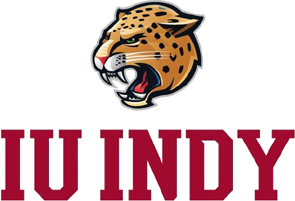Story by Bob Romantic
Photos by Darryl Webb
GCU News Bureau
As Grand Canyon University wraps up its final year of transition to NCAA Division I athletics, all the usual suspects are involved.
University leaders in academics, health and wellness, human resources, operations, spiritual life, business analytics, student development and outreach … wait, this is NCAA athletics, right?

“Everyone is on board,” explained Jamie Boggs, deputy athletics director for GCU. “This is a university process, not just an athletic department process. It’s a shared responsibility.”
The transition to NCAA Division I began in 2012 when GCU was invited to join the Western Athletic Conference. The University was in the midst of back-to-back Director’s Cup championships as the top collegiate athletic program in the country at the NCAA Division II level in 2011-12 and 2012-13, and it had a long history of success at the NAIA level with four national championships in baseball (1980, ’81, ’82 and ’96), three in men’s basketball (1975, ’78 and ’88) and one in women’s tennis (1980). It also won NCAA Division II championships in men’s soccer (1996) and men’s indoor track and field (2012).
Among the notable student-athletes who got their start at Grand Canyon were Tim Salmon, who played 14 years in Major League Baseball and was the American League Rookie of the Year in 1993, as well as NBA players Bayard Forrest and Horatio Llamas (the first Mexican-born player in the NBA).

“Growing up in Phoenix, I can remember the ’70s and the days of Bayard Forrest in basketball and listening to the NAIA Tournament, and you go into the ’80s with baseball, it was fun because at those times Grand Canyon was playing ASU and they had a great baseball program as well, and we were going head to head,” said Will Gonzalez, chairman of GCU’s Board of Trustees. “So this is like a natural progression for us from NAIA to Division II and now to Division I.”
The transition process takes four years, during which time the University’s athletic teams are not eligible to compete in NCAA postseason play. The first two years were devoted to developing and implementing a strategic plan for NCAA Division I athletics that includes everything from compliance and academic integrity to gender equity and diversity. In Year 3, a self-study of the athletics program was conducted. And this year, an NCAA review team will visit the University to evaluate the athletics program.
Four committees were formed to guide the process.
- Steering Committee
- Governance and Commitment to Rules Compliance Committee
- Academic Integrity Committee
- Gender, Diversity and Student-Athlete Well-Being Committee
Those groups are comprised mostly of university representatives not connected to athletics.
“For example, there are two people from athletics on the 20-person steering committee,” Boggs said. “All four of the committees are chaired by people outside of athletics. Their job is to ensure that the University policies and procedures and governance structure meet NCAA expectations.”
Boggs said one of the goals of the Academic Integrity Committee was to create policies and procedures that ensure student-athletes have sufficient time for academics when they miss class time during university-sponsored events.

“What they came up with is now a university policy not only for student-athletes but also for members of cheer and dance, band, the speech and debate team, and others,” Boggs said. “We wanted to make sure they had appropriate time to make up their work and that the policies for student-athletes was the same as those for the general student body.”
After the NCAA site review team visits campus, it will make a recommendation to the NCAA next spring. Final approval likely would come next summer, after which GCU would be a full-fledged Division I member eligible to compete in postseason play.
Mike Vaught, vice president of athletics, said that puts the athletic department on a whole new playing field in its goal to develop top 25-caliber programs in all 21 of its Division I sports. Equally as important, Vaught said the attention athletics receives serves as a window to all the other positive things at GCU, both on its campus and in its community.

“Becoming a top 25 school in everything we do gives us a national platform to tell our GCU story, which is special and will never be told again,” Vaught said.
The University’s rise has been unprecedented. Since 2008, enrollment on GCU’s campus has grown from about 900 students to nearly 17,500 while the physical campus has tripled in size to 300 acres. The university has invested nearly $1 billion in academic infrastructure that includes new degree programs throughout its nine colleges.
GCU also is heavily involved in transforming its inner-city community through free tutoring partnerships with K-12 schools that are having dramatic results, a first-of-its-kind $1 million partnership with the Phoenix Police Department to improve safety in the neighborhoods surrounding the University, the largest Habitat for Humanity program in the country to renovate as many as 700 homes in the area, and countless other community service projects.
“Grand Canyon University is a partner,” said Phoenix City Councilman Daniel Valenzuela. “It is a stakeholder. Something special is happening when you get thousands of students in neighborhoods working with organizations to repair homes. It’s just about doing the right thing and paying it forward. That kind of thing is really helping to move west Phoenix in a very, very positive direction.”
Boggs said GCU always has had a strong connection to the community. “The athletics piece is really the icing on the cake. It’s just the family-friendly fun that brings the community onto campus and really gets us together to cheer on a university we all have already bought into.”
Contact Bob Romantic at (602) 639-7611 or [email protected].















